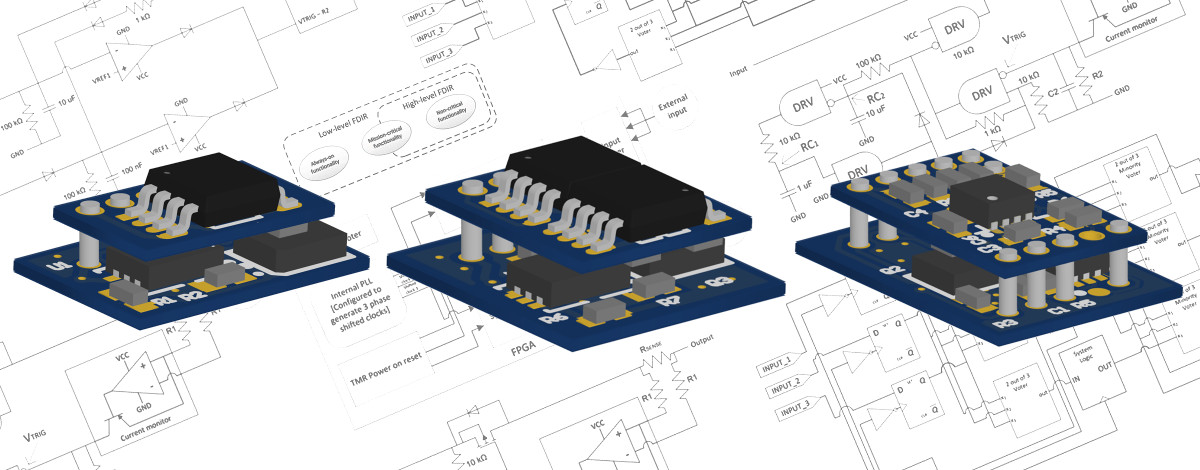

This paper presents an approach for implementing radiation protection FDIR (Fault Detection, Isolation and Recovery) techniques designed especially for nanosatellites, capable of ensuring reliable operation in harsh orbits using COTS (Commercial off the Shelf) components. The radiation environment, as encountered by nanosatellites utilizing Flash-based FPGAs in orbits higher than Low Earth Orbit, is analyzed, primarily focusing on SEE (Single Event Effects). In order to assure reliable operation, the FDIR policy is split into two levels: the Low Level FDIR which ensures that no permanent damage occurs to the satellite’s electronics, which then allows the use of a High Level FDIR, which is tasked with maintaining high availability. A hierarchical approach, consisting of three types of current limiters in combination with watchdog timers and fault tolerant logic implemented inside a flash-based FPGA is proposed for the Low Level FDIR. The impacts of various radiation-induced faults are analyzed with respect to how the FDIR techniques mitigate them. The proposed current limiters and watchdog timers have been implemented and evaluated for suitability of use with the hierarchical FDIR policy. In order to decrease the impacts on the size and weight footprints, the current limiters were implemented as stacked 3D modules.